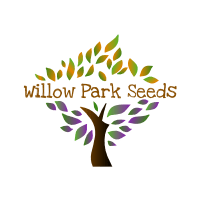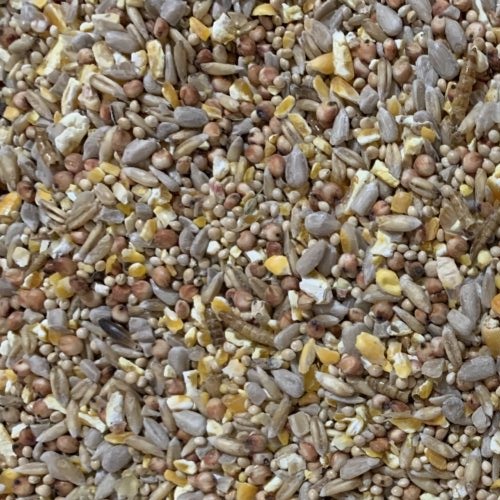THE 10 MOST COMMON WILD BIRDS YOU'RE LIKELY TO SEE AT YOUR FEEDERS
Let's Get Started!
Grab yourself a hot beverage, turn off that tv and take a break from the complications of modern life! It’s time to explore the 10 most common wild birds you are likely to see at the feeders, and look at some awesome photos while doing so!
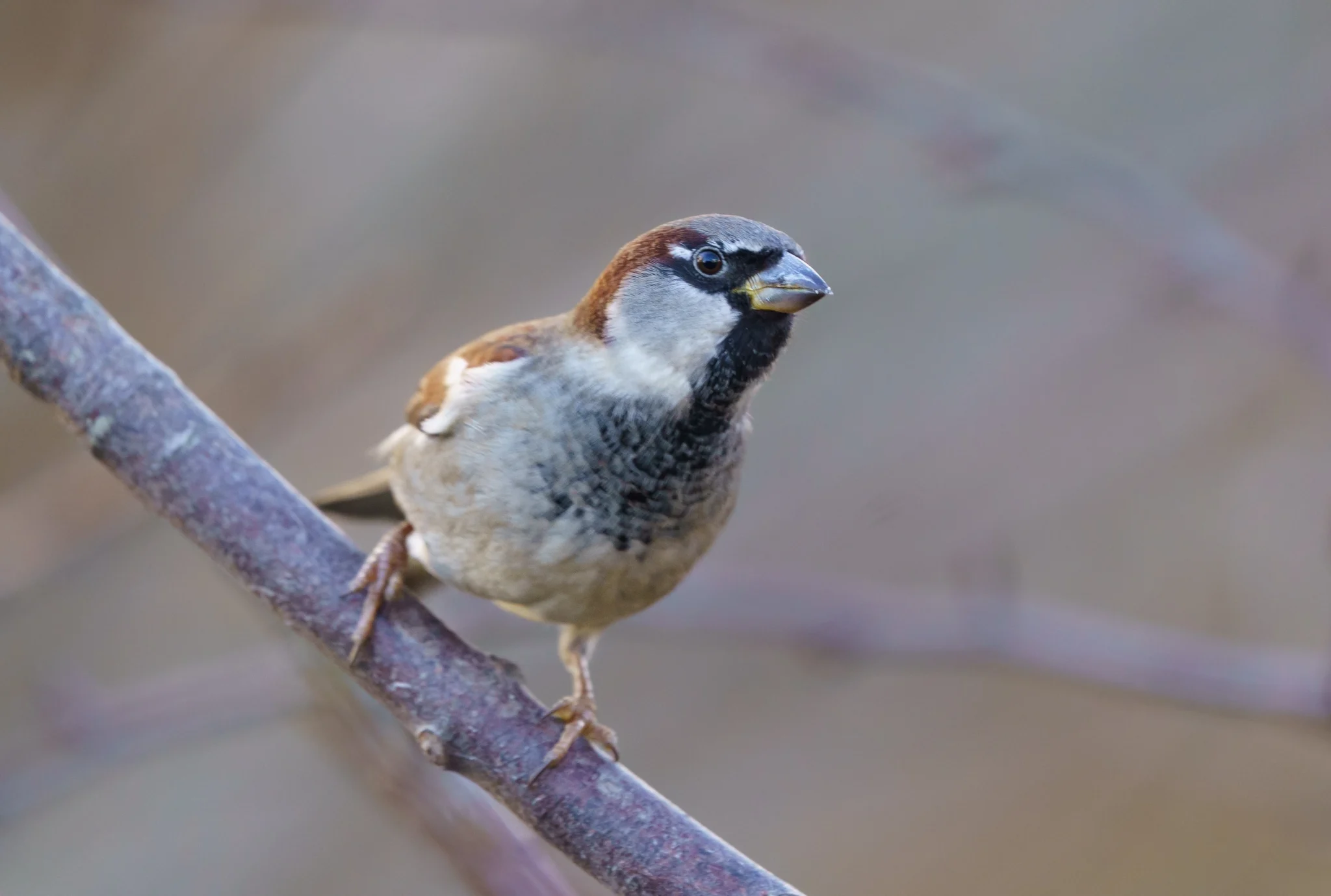
1. House Sparrow
(Passer domesticus)
Description: The House Sparrow is a small, sociable bird with brown plumage and distinctive black markings. These lively birds are often seen in flocks, chirping and fluttering around gardens.
Diet: House Sparrows are omnivores, feeding on seeds, insects, and scraps of human food. They particularly enjoy sunflower seeds and suet.
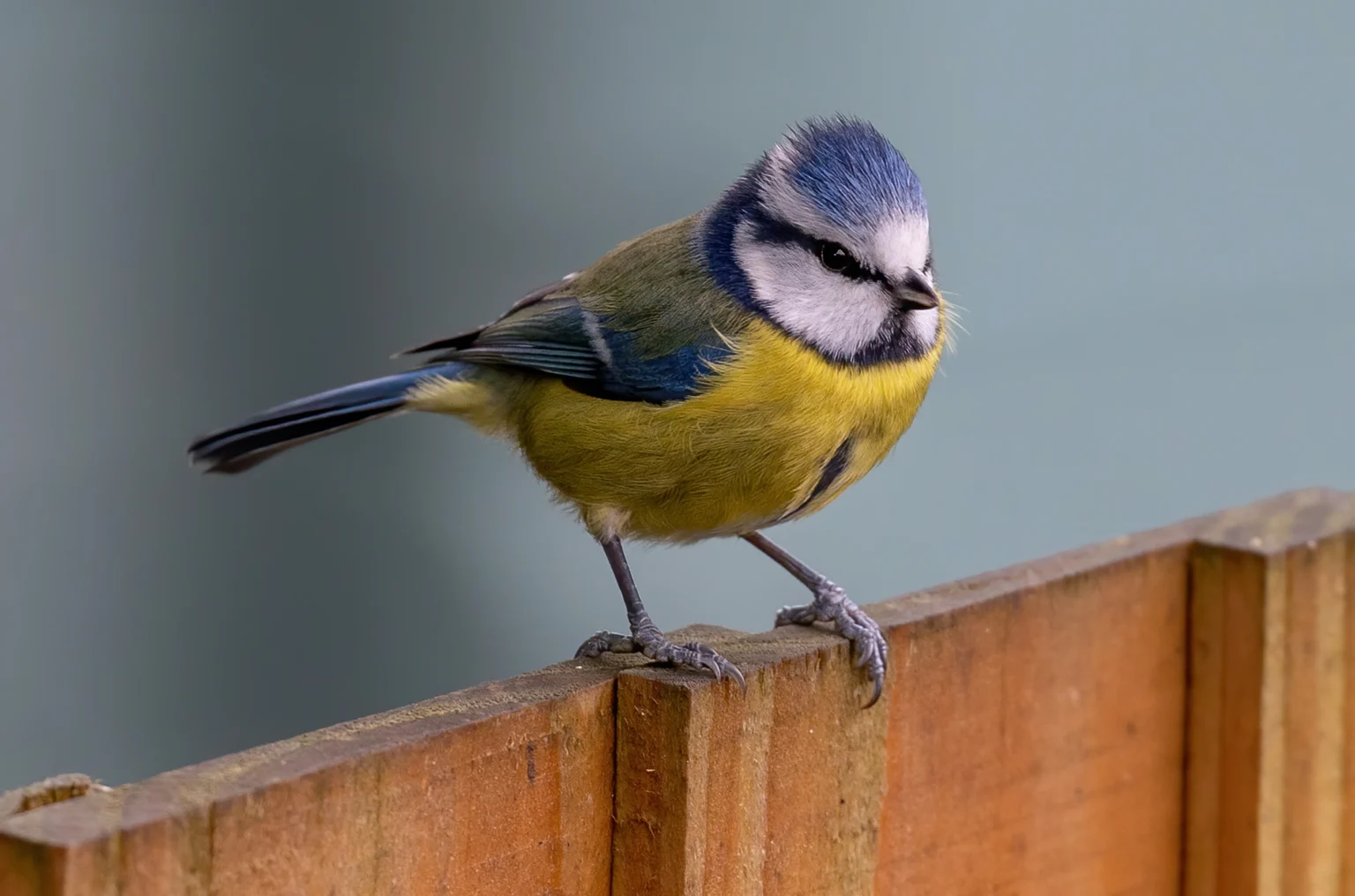
2. Blue Tit
(Cyanistes caeruleus)
Description: Blue Tits are vibrant birds with striking blue and yellow plumage and a distinctive white face. They’re known for their acrobatic antics while foraging.
Diet: Their diet consists of insects, caterpillars, and spiders, making them valuable for pest control. They also feed on seeds, especially sunflower hearts.
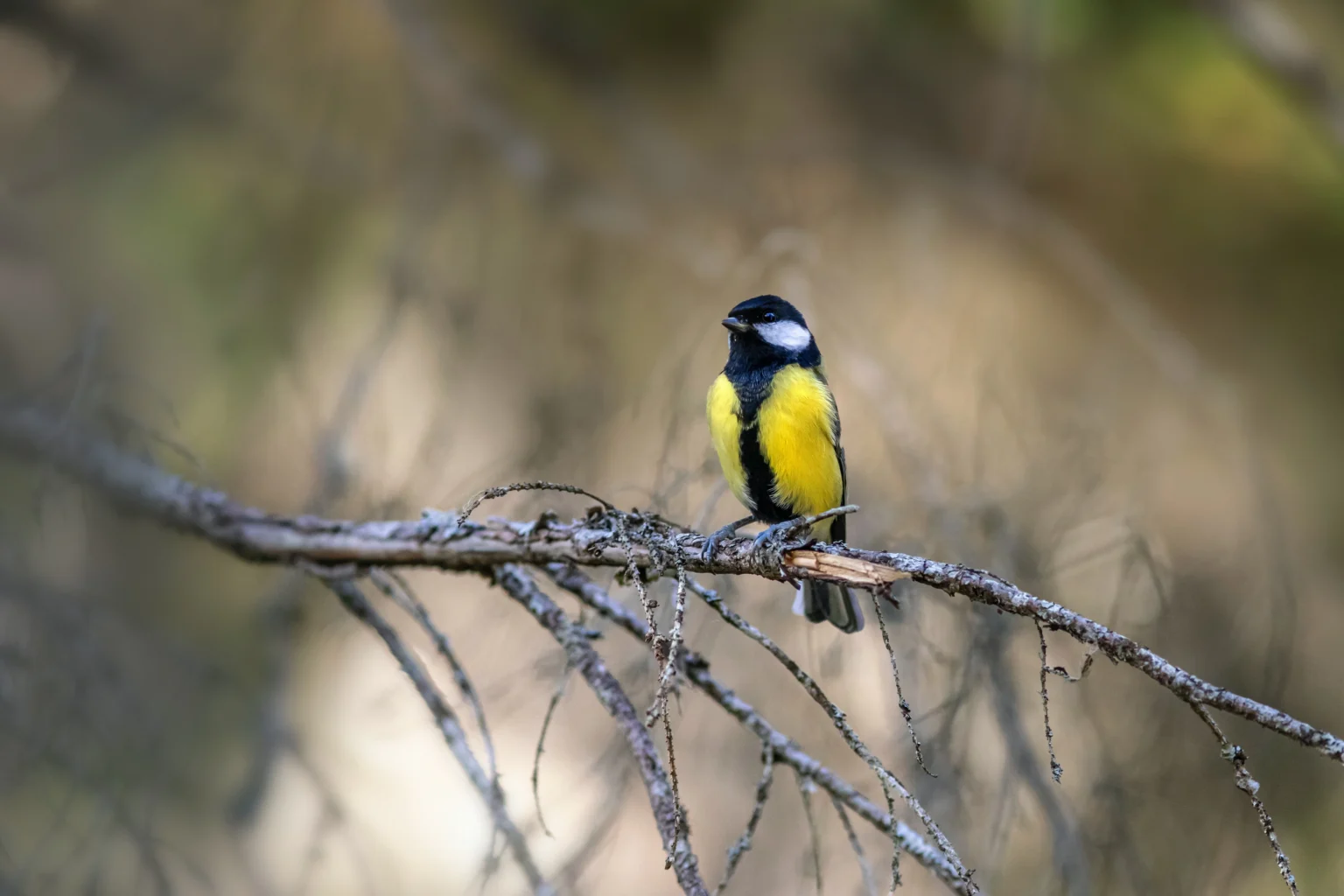
3. Great Tit
(Parus major)
Description: Great Tits are larger than Blue Tits and have a yellow belly, a black stripe down their chest, and white cheeks.
Diet: They consume insects, seeds, and nuts. Peanuts are a favorite, often found in feeders.
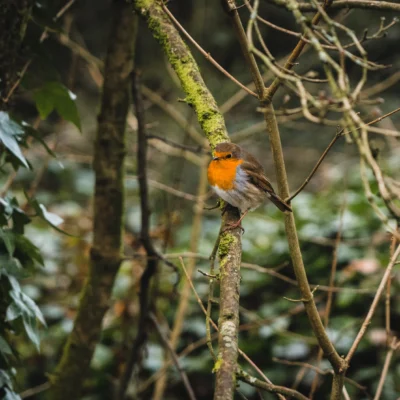
4. Robin
(Erithacus rubecula)
Description: The Robin is known for its vibrant red breast, making it a symbol of Christmas. They’re friendly birds with a melodious song.
Diet: Robins eat a variety of foods, including insects, worms, and berries. They’re fond of mealworms and suet pellets.
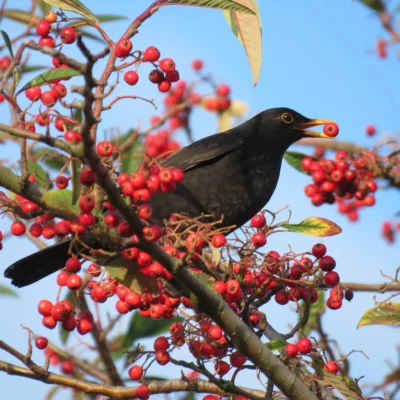
5. Blackbird
(Turdus merula)
Description: Blackbirds are dark with a striking orange-yellow eye-ring and bill. They have a beautiful, melodious song.
Diet: Their diet primarily consists of insects, earthworms, and fruits, particularly berries and apples.
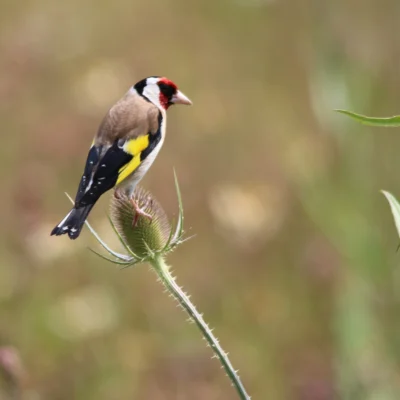
6. Goldfinch
(Carduelis carduelis)
Description: Goldfinches are small, striking birds with red faces and vibrant yellow wing patches. They have a delightful, tinkling call.
Diet: They feed on seeds, particularly thistle seeds and sunflower hearts.
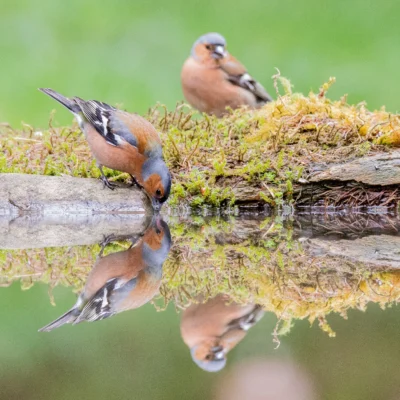
7. Chaffinch
(Fringilla coelebs)
Description: Chaffinches are small birds with a pinkish breast and white belly. Males have striking blue-grey heads.
Diet: Their diet consists of seeds, insects, and fruit. They enjoy sunflower seeds and mealworms.
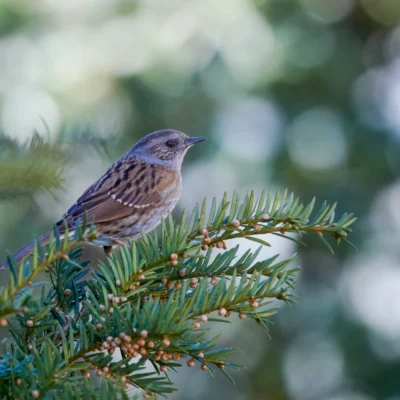
8. Dunnock
(Prunella modularis)
Description: Dunnocks are brownish-gray birds with streaked plumage. They are often seen hopping around the garden.
Diet: They mainly eat insects, spiders, and small seeds like millet.
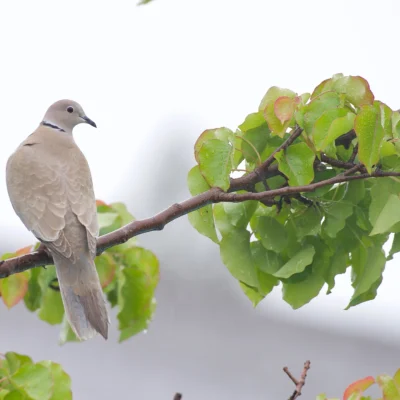
9. Collared Dove
(Streptopelia decaocto)
Description: Collared Doves are beautiful pale gray with a distinctive black collar on the back of their neck.
Diet: They primarily feed on seeds, especially grains like wheat and sunflower seeds.
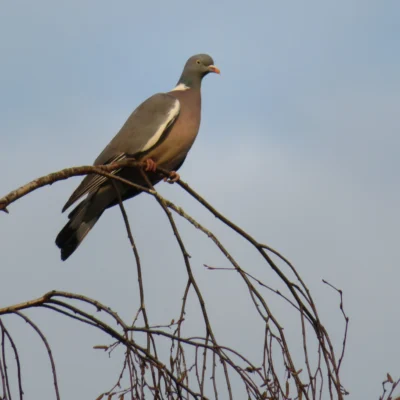
10. Woodpigeon
(Columba palumbus)
Description: Woodpigeons are large, gray pigeons with a distinctive white neck patch and a cooing call.
Diet: They primarily consume grains, seeds, and vegetables, often visiting bird tables for their meals.
The 10 Best Foods To Feed UK Wild Birds
Bird Seed Mixes: Bird food mixes containing a blend of seeds like sunflower seeds, millet, and cracked corn are attractive to many species, including sparrows, finches, and tits.
Sunflower Seeds: Black oil sunflower seeds are a favorite among many birds, including Blue Tits, Great Tits, and Goldfinches.
Sunflower Hearts: The inner (heart) of the black oil sunflower, they come pre-shelled so birds do not have to crack them open. Wild birds will not eat the outer husk of black oil sunflower seeds, therefore, these cut down of mess at the bird feeder and how much food the bird can consume in a short space of time.
Nyjer (Thistle) Seeds: Nyjer seeds are tiny and favored by Goldfinches and Siskins. They’re often offered to the wild birds in specialized feeders with small openings.
Peanuts: Peanuts are popular with birds like Great Tits and Blue Tits. Ensure they are unsalted and, if possible, serve them from mesh feeders to prevent choking hazards.
Peanut Granules: Also known as kibbled peanuts are chopped into small managable pieces for the birds to consume quickly. It’s removes the chocking hazard and are a fantastic food for smaller songbirds and fledglings.
Mealworms & Calciworms: Mealworms are a protein-rich treat loved by Robins, Dunnocks, and Blackbirds. ! Do not overfeed mealworms during the breeding seasons you’ll do more harm than good ! You can read about why in our blog.
Suet: Suet cakes, balls or pellets provide a high-energy food for birds like all song birds and also Woodpeckers, Starlings, and Nuthatches. They are especially important in colder months for an energy boost.
Fruit: Fresh fruit and dried fruits, such as apples, raisins and pears, can attract Blackbirds and Thrushes. If however you own a pet, please be aware that raisins are toxic to dogs.
Live Mealworms and Waxworms: These live insects are a great source of protein for insect-eating birds like Robins, Blue Tits, and Wrens.
Clean Water: Don’t forget a fresh water source for drinking and bathing, which is essential for all birds, especially in winter when natural water sources may freeze.
How Much Does Feeding The Birds Cost?
The costs associated with feeding wild birds varies greatly depending on which bird seeds you buy and how often you’re putting food out. However, we strongly advocate feeding the birds a well balanced diet, the cost of feeding wild birds only really starts to spiral out of control when you try to feed them too much of a good thing, which is consequently, bad for them. Some businesses try to condition you into buying huge amounts of the most expensive ingredients separately (known as straights), and not because it’s best for the birds. As a business we don’t deploy these tactics, our interest lies in the birds having the correct diet and to give nature a helping hand and for our customers to have an enjoyable hobby, we say enjoyable for a reason, nothing sucks the fun out of a hobby more than spiraling costs.
As a business, we don’t deploy these tactics. Our interest lies in the birds having the correct diet and giving nature a helping hand, and for our customers to have an enjoyable hobby. We say ‘enjoyable’ for a reason; nothing sucks the fun out of a hobby more than spiraling costs.
For that reason, and to ensure the birds have the best diet possible, we always recommend that our customers shop in moderation. Selecting a good bag of bird food with a mix that appeals to a wide range of wild birds, a small bag of sunflower hearts (2.5kg is a good amount), and a small bag of peanuts or peanut granules (again, 2.5kg is a good amount). This way, you’ll have a great selection of foods and treats for the birds to enjoy at a reasonable cost. We provide regular weekly offers with prices far cheaper than our competitors, retailing smaller bags of seeds such as peanuts, nyjer seed, and sunflower hearts to go with your order. We’d rather put the customer first and sell you the product that you need in the quantities you want, rather than sell you vast quantities of straight seeds that can be problematic to store and might take you an age to get through.
Click on the categories below to see just how cost effective our wild bird mixes and weekly offers can be.
